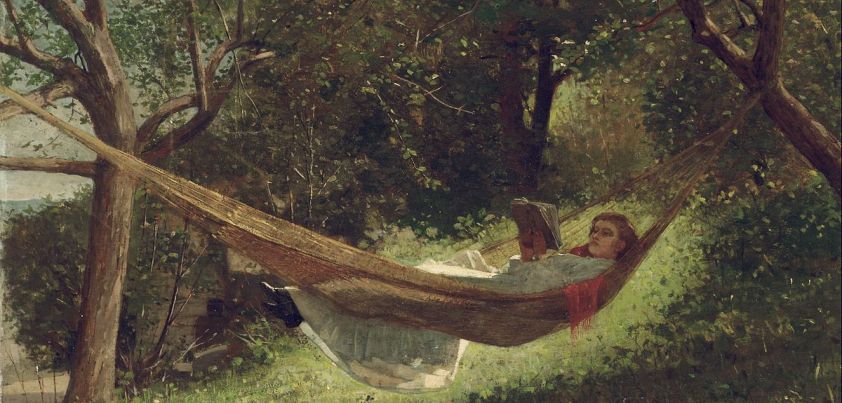 The major theme of this story by Thomas Aldrich is how well-intentioned deception can lead to unexpected results. A wealthy, self-absorbed young man has difficulty adjusting to being confined to a sofa with a broken leg. His doctor asks the man’s best friend, who is holidaying near the sea with his sick father, to write frequently in order to “distract and cheer him up”. The friend complies, beginning with an innocent white lie about the beautiful girl living across the road. Unfortunately, as is often the case, one lie leads to another and soon the distraction grows into an obsession. More…
The major theme of this story by Thomas Aldrich is how well-intentioned deception can lead to unexpected results. A wealthy, self-absorbed young man has difficulty adjusting to being confined to a sofa with a broken leg. His doctor asks the man’s best friend, who is holidaying near the sea with his sick father, to write frequently in order to “distract and cheer him up”. The friend complies, beginning with an innocent white lie about the beautiful girl living across the road. Unfortunately, as is often the case, one lie leads to another and soon the distraction grows into an obsession. More…
Category Archives: Short Stories
When Darkness Falls
 One of Ruskin Bond’s strengths is his ability to portray characters that are so life-like readers can empathize with them. So it is with this tragic story of man so frightfully disfigured by war that he is afraid to leave his room by day, and confines himself to creeping phantom-like around an aging hotel by night. His loves in life are his books and music. The message of the story: before turning away from a grossly disfigured or disabled person, stop to consider the feelings of the human being within. Themes include appearance, fear, despair, the healing power of music. More…
One of Ruskin Bond’s strengths is his ability to portray characters that are so life-like readers can empathize with them. So it is with this tragic story of man so frightfully disfigured by war that he is afraid to leave his room by day, and confines himself to creeping phantom-like around an aging hotel by night. His loves in life are his books and music. The message of the story: before turning away from a grossly disfigured or disabled person, stop to consider the feelings of the human being within. Themes include appearance, fear, despair, the healing power of music. More…
Tell Them Not to Kill Me
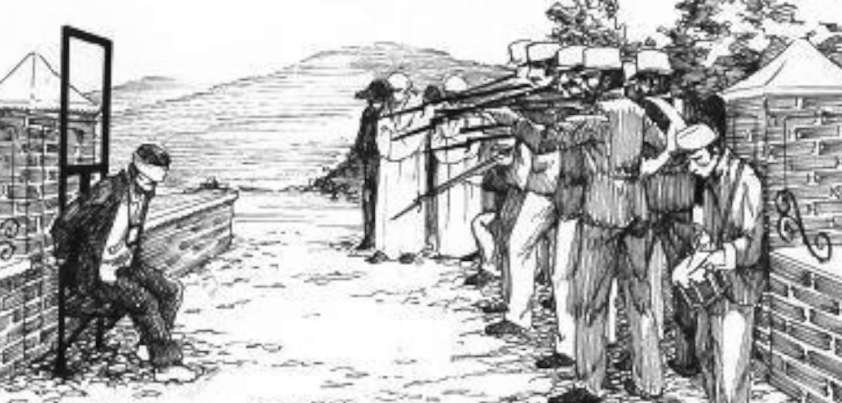 Juan Rulfo‘s short stories focus on the violence and hardships of rural peasant life in post-revolutionary Mexico. In this story a farmer (Juvencio) has been on the run for thirty-five years after viciously killing a friend for refusing to share his pasture during a severe drought. The murdered man’s son, now a police colonel, arranges for Juvencio’s capture. Juvencio, showing no remorse, begs for his life on the basis that he has already suffered enough. His grisly summary execution leaves readers to decide whether justice was served. Themes: land reform; endemic corruption; judicial system breakdown; father-son relationships; violence; revenge.
Juan Rulfo‘s short stories focus on the violence and hardships of rural peasant life in post-revolutionary Mexico. In this story a farmer (Juvencio) has been on the run for thirty-five years after viciously killing a friend for refusing to share his pasture during a severe drought. The murdered man’s son, now a police colonel, arranges for Juvencio’s capture. Juvencio, showing no remorse, begs for his life on the basis that he has already suffered enough. His grisly summary execution leaves readers to decide whether justice was served. Themes: land reform; endemic corruption; judicial system breakdown; father-son relationships; violence; revenge.
More…
Letter to a Young Lady in Paris
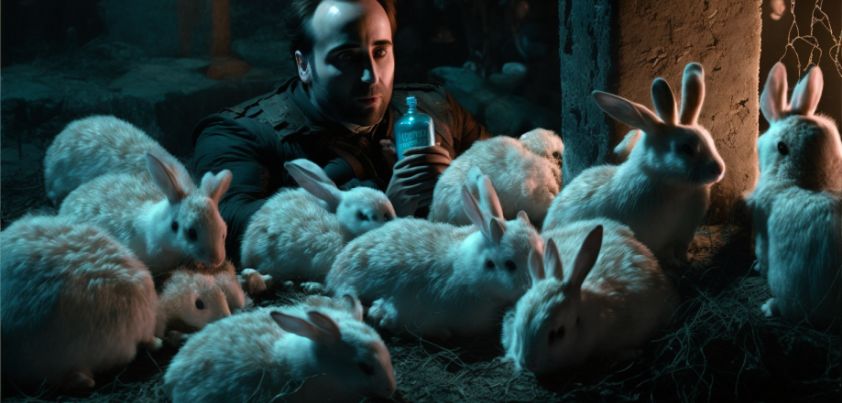 This surreal story by Julio Cortázar is in the form of a letter from an Argentinean man to a friend who has allowed him to stay in her apartment while she is visiting Paris. His concerns about disrupting the compact order of her rooms become a reality when, on the point of moving in, he vomits up a tiny rabbit. This is normally an occasional occurrence, but ten more bunnies pop out over the following weeks. As they grow and begin to trash the place, he contemplates drastic action. Themes include phobia (about moving), obsession (with orderliness), depression, alienation, despair. More…
This surreal story by Julio Cortázar is in the form of a letter from an Argentinean man to a friend who has allowed him to stay in her apartment while she is visiting Paris. His concerns about disrupting the compact order of her rooms become a reality when, on the point of moving in, he vomits up a tiny rabbit. This is normally an occasional occurrence, but ten more bunnies pop out over the following weeks. As they grow and begin to trash the place, he contemplates drastic action. Themes include phobia (about moving), obsession (with orderliness), depression, alienation, despair. More…
A Conversation With My Father
 This story from Grace Paley uses a meta-fictional approach (a story about storytelling) to highlight generational differences between a writer and her aged father. The father, who is confined to bed, asks his daughter to write a simple story just once more, the kind Maupassant wrote. Instead, she relates a minimalist, open-ended tale with several possible outcomes. These artistic differences reflect the ailing father’s coming death. He has accepted that the end is near; she is not ready to. Her story challenges the father’s views on themes such as family, parenting, addiction, and the ability to change one’s destiny. More…
This story from Grace Paley uses a meta-fictional approach (a story about storytelling) to highlight generational differences between a writer and her aged father. The father, who is confined to bed, asks his daughter to write a simple story just once more, the kind Maupassant wrote. Instead, she relates a minimalist, open-ended tale with several possible outcomes. These artistic differences reflect the ailing father’s coming death. He has accepted that the end is near; she is not ready to. Her story challenges the father’s views on themes such as family, parenting, addiction, and the ability to change one’s destiny. More…
Smell / Bu
 In this story by Saadat Hasan Manto, a refined Indian man sees a factory worker sheltering under a tree outside his apartment during a rainstorm. He invites her up to dry off and, consensual or otherwise, they have sex. As she spends the night he notices that every part of her body emits an at once foul and sweet-smelling odour. This enchants him so much that sex with other women, including the henna-smelling upper-class wife he marries years later, is less satisfying. Themes include social class/ethnicity, exploitation (rape?), promiscuity, sensuality, smell as an agent for memory and desire. More…
In this story by Saadat Hasan Manto, a refined Indian man sees a factory worker sheltering under a tree outside his apartment during a rainstorm. He invites her up to dry off and, consensual or otherwise, they have sex. As she spends the night he notices that every part of her body emits an at once foul and sweet-smelling odour. This enchants him so much that sex with other women, including the henna-smelling upper-class wife he marries years later, is less satisfying. Themes include social class/ethnicity, exploitation (rape?), promiscuity, sensuality, smell as an agent for memory and desire. More…
Toy Shop
 In this story by Harry Harrison, an Air Force scientist buys a trick rocket from a toy fair. A thin piece of string makes the rocket rise and fall, and he plans to entertain some other scientists with it at a poker party. At the party, the scientists discover that the trick only works in certain conditions. They are curious as to why, because it seems that the toy may break a basic law of physics. What they don’t know is that this is all part of a plan for them to help make someone else very rich. More…
In this story by Harry Harrison, an Air Force scientist buys a trick rocket from a toy fair. A thin piece of string makes the rocket rise and fall, and he plans to entertain some other scientists with it at a poker party. At the party, the scientists discover that the trick only works in certain conditions. They are curious as to why, because it seems that the toy may break a basic law of physics. What they don’t know is that this is all part of a plan for them to help make someone else very rich. More…
Private Lies
 This story by Bobbie Ann Mason reveals how events of the past can resurface and have a significant effect on the present. A seemingly happily married man with two children becomes obsessed with finding the soon-to-be eighteen-year-old woman he and his previous wife gave up for adoption at birth. The quest causes him to look up his ex-wife, who has changed significantly in looks and character. This leads to a steamy affair that is on the brink of destroying his current marriage. Themes include marriage, teenage pregnancy, control, loss, regret, deception. More…
This story by Bobbie Ann Mason reveals how events of the past can resurface and have a significant effect on the present. A seemingly happily married man with two children becomes obsessed with finding the soon-to-be eighteen-year-old woman he and his previous wife gave up for adoption at birth. The quest causes him to look up his ex-wife, who has changed significantly in looks and character. This leads to a steamy affair that is on the brink of destroying his current marriage. Themes include marriage, teenage pregnancy, control, loss, regret, deception. More…
In the Garden
 Set during the Philippine’s Marcos dictatorship, this story by Jose Dalisay Jr. takes place in the garden of an isolated one-room school. As the children tend their vegetables, a group of soldiers appears and begins to pull them out. Their orders are to take or destroy all local food sources in retaliation for the killing of one of their number. The younger children are sent home, but the oldest (a fourteen-year-old girl) is ordered to stay to “cook and do the soldier’s washing”. Bravely, the teacher insists on staying with her. Themes include innocence, oppression, intimidation, helplessness, fear, responsibility, courage. More…
Set during the Philippine’s Marcos dictatorship, this story by Jose Dalisay Jr. takes place in the garden of an isolated one-room school. As the children tend their vegetables, a group of soldiers appears and begins to pull them out. Their orders are to take or destroy all local food sources in retaliation for the killing of one of their number. The younger children are sent home, but the oldest (a fourteen-year-old girl) is ordered to stay to “cook and do the soldier’s washing”. Bravely, the teacher insists on staying with her. Themes include innocence, oppression, intimidation, helplessness, fear, responsibility, courage. More…
Old Aeson
 In this story by Arthur Quiller-Couch who wrote under the pen-name “Q” (No relation to the James Bond Q!), a very old man almost freezes to death outside a rich man’s house. The rich man takes the old man in and has him cared for. Nobody knows who the old man is or where he came from, and no one can understand his strange language. However, the old man has a mysterious power. He begins to suck the life out of the rich man, slowly turning him into an old man as he becomes younger and younger. More…
In this story by Arthur Quiller-Couch who wrote under the pen-name “Q” (No relation to the James Bond Q!), a very old man almost freezes to death outside a rich man’s house. The rich man takes the old man in and has him cared for. Nobody knows who the old man is or where he came from, and no one can understand his strange language. However, the old man has a mysterious power. He begins to suck the life out of the rich man, slowly turning him into an old man as he becomes younger and younger. More…
Twenty Minutes
 There is a saying that your life flashes before your eyes in the moments before you die. In this James Salter story, the protagonist has twenty minutes to think about it. A woman riding a horse in the countryside is paralyzed in a fall. She estimates that she will die from her injuries if help doesn’t arrive within twenty minutes. As the minutes tick by, she recalls recent events in her life. Sadly, the picture they paint is not a very happy one. The central theme is, of course, death. Other themes: family estrangement, marriage, unfaithfulness, loneliness, desperation, unfulfilled dreams. More…
There is a saying that your life flashes before your eyes in the moments before you die. In this James Salter story, the protagonist has twenty minutes to think about it. A woman riding a horse in the countryside is paralyzed in a fall. She estimates that she will die from her injuries if help doesn’t arrive within twenty minutes. As the minutes tick by, she recalls recent events in her life. Sadly, the picture they paint is not a very happy one. The central theme is, of course, death. Other themes: family estrangement, marriage, unfaithfulness, loneliness, desperation, unfulfilled dreams. More…
Taking Care
 Written at a writer’s retreat in the early 1970s, this is Joy Williams’s first published story. An understandably distracted parish priest goes through the motions of fulfilling his duties as his wife wastes away in hospital from an unknown blood disorder, and he cares for his six-month-old granddaughter and a dog abandoned by his irresponsible daughter. Caring for the baby while his daughter “finds herself” in Mexico provides solace and a reminder that life goes on as he prepares for his wife’s anticipated homecoming. Themes include family, abandonment, responsibility, nostalgia, childhood adaptability, love, marriage, suffering, death, grace. More…
Written at a writer’s retreat in the early 1970s, this is Joy Williams’s first published story. An understandably distracted parish priest goes through the motions of fulfilling his duties as his wife wastes away in hospital from an unknown blood disorder, and he cares for his six-month-old granddaughter and a dog abandoned by his irresponsible daughter. Caring for the baby while his daughter “finds herself” in Mexico provides solace and a reminder that life goes on as he prepares for his wife’s anticipated homecoming. Themes include family, abandonment, responsibility, nostalgia, childhood adaptability, love, marriage, suffering, death, grace. More…
Testimonial
 The major theme of this Edwidge Danticat story is cultism. A woman dies after 25 years in prison for murdering her baby son. Her daughter has had to keep a terrible secret. Her mother was a member of a bizarre sisterhood made up of descendants of former Haitian slaves. The killing of her brother was a sacrifice to restore the daughter’s failing health. For years, she has been trained in the ways of the cult. She must now unwillingly take her mother’s place among its membership. There appears no way out. Other themes: motherhood, fear, superstition, destiny. More…
The major theme of this Edwidge Danticat story is cultism. A woman dies after 25 years in prison for murdering her baby son. Her daughter has had to keep a terrible secret. Her mother was a member of a bizarre sisterhood made up of descendants of former Haitian slaves. The killing of her brother was a sacrifice to restore the daughter’s failing health. For years, she has been trained in the ways of the cult. She must now unwillingly take her mother’s place among its membership. There appears no way out. Other themes: motherhood, fear, superstition, destiny. More…
The Lady With the Dog
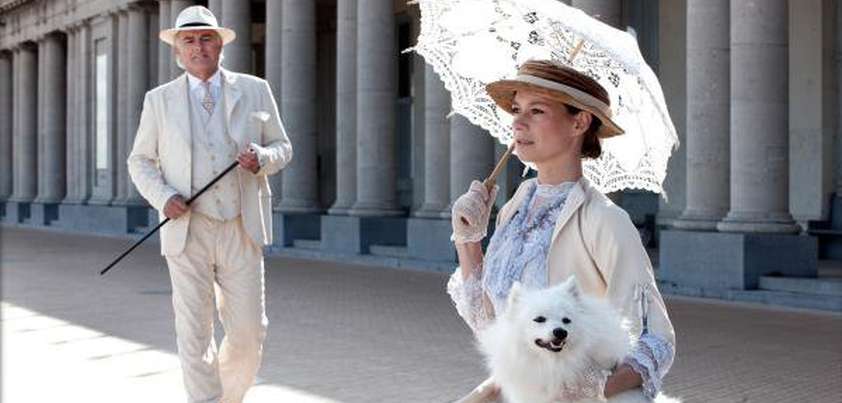 Anton Chekhov’s Lady With the Dog is about a philandering misogynist who meets a much younger woman while on vacation. Both have unhappy marriages; both are open to holiday romance. They enjoy a brief affair, then go their separate ways. After parting, each becomes obsessed with the memory of the other. He tracks her down, and soon they are planning a future together. The story has an open ending, but one suspects that each now looks at relationships and the world in a new way. Themes: love, infidelity, guilt, morality, chauvinism, sexual objectification, commitment. More…
Anton Chekhov’s Lady With the Dog is about a philandering misogynist who meets a much younger woman while on vacation. Both have unhappy marriages; both are open to holiday romance. They enjoy a brief affair, then go their separate ways. After parting, each becomes obsessed with the memory of the other. He tracks her down, and soon they are planning a future together. The story has an open ending, but one suspects that each now looks at relationships and the world in a new way. Themes: love, infidelity, guilt, morality, chauvinism, sexual objectification, commitment. More…
The Devil and Tom Walker
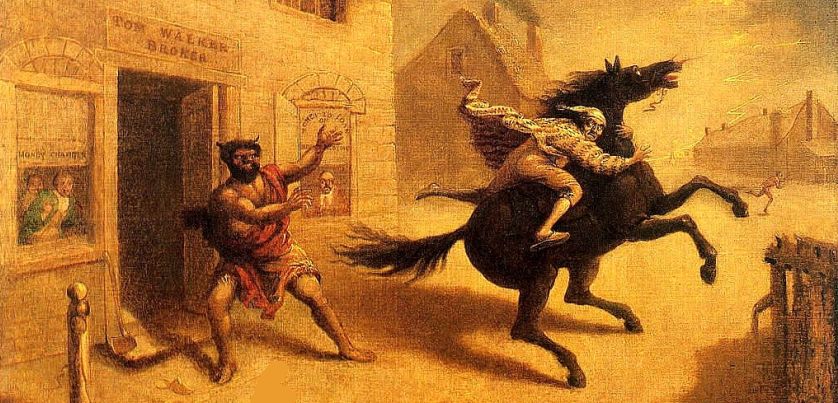 The major theme of this story by Washington Irving is greed. Other themes include storytelling, usury, religion and hypocrisy. Set in early eighteenth century America, a miserly, poverty-stricken man (Tom Webster) meets “Old Scratch” (the Devil) as he takes a short-cut home through a swamp. Tom initially declines an offer of riches for his soul, but later agrees after the Devil unknowingly does him a favor by disposing of his shrew-like wife. Upon becoming extremely wealthy by making and foreclosing on usurious loans, he tries to change his fate through “violent” religious piety. It doesn’t work! More…
The major theme of this story by Washington Irving is greed. Other themes include storytelling, usury, religion and hypocrisy. Set in early eighteenth century America, a miserly, poverty-stricken man (Tom Webster) meets “Old Scratch” (the Devil) as he takes a short-cut home through a swamp. Tom initially declines an offer of riches for his soul, but later agrees after the Devil unknowingly does him a favor by disposing of his shrew-like wife. Upon becoming extremely wealthy by making and foreclosing on usurious loans, he tries to change his fate through “violent” religious piety. It doesn’t work! More…
Death in the Woods
 This story is heralded as Sherwood Anderson’s finest work. Containing very little dialogue, it tells of the sad life of an exploited, hard-working woman whose frozen body in the woods radiates a mystical beauty. If readers will excuse the pun, one aspect of the story leaves me a little cold. The first person narrator, a young boy, seems to have way too much information about the woman’s history to make the backstory he provides convincing. Themes include workplace abuse, poverty, loneliness and isolation, gender roles, beauty and desire, and from the narrator’s perspective, completion of one’s destiny (feeding animal life!). More…
This story is heralded as Sherwood Anderson’s finest work. Containing very little dialogue, it tells of the sad life of an exploited, hard-working woman whose frozen body in the woods radiates a mystical beauty. If readers will excuse the pun, one aspect of the story leaves me a little cold. The first person narrator, a young boy, seems to have way too much information about the woman’s history to make the backstory he provides convincing. Themes include workplace abuse, poverty, loneliness and isolation, gender roles, beauty and desire, and from the narrator’s perspective, completion of one’s destiny (feeding animal life!). More…
The Age of Lead
 In this story by Margaret Atwood, a frozen 150-year-old body buried in the permafrost provides a lesson for the living. The story uses the solution to mystery cause of death of members of the ill-fated Franklin Expedition to highlight the dangers of consumerism and modern technology such as soil and water pollution, toxic waste and acid rain. The issues are brought home in the parallel story involving the the protagonist’s frustrating relationship with her eccentric, possibly gay lifetime friend who dies of an unknown viral infection. Themes include tragedy, side effects of consumerism and technology, individuality, friendship/unfulfilled love. More…
In this story by Margaret Atwood, a frozen 150-year-old body buried in the permafrost provides a lesson for the living. The story uses the solution to mystery cause of death of members of the ill-fated Franklin Expedition to highlight the dangers of consumerism and modern technology such as soil and water pollution, toxic waste and acid rain. The issues are brought home in the parallel story involving the the protagonist’s frustrating relationship with her eccentric, possibly gay lifetime friend who dies of an unknown viral infection. Themes include tragedy, side effects of consumerism and technology, individuality, friendship/unfulfilled love. More…
Lajwanti
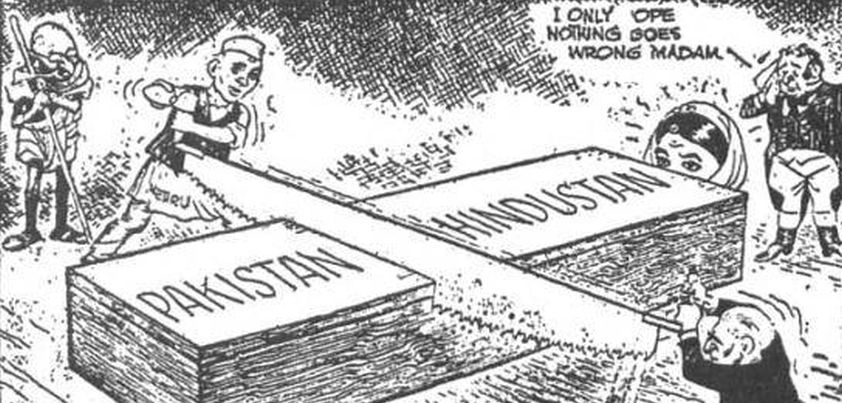 Thanks to a 2006 tele-film, this has become Urdu writer Rajinder Singh Bedi’s signature story. Set in the violent upheaval of British India’s 1947 partition, it follows Sunderlal, a Hindu activist whose wife, Lajwanti, is abducted into Pakistan. The ironic descriptions of domestic life (Lajwanti considered vicious beatings from Sunderlal “normal”, and appears confused by the kind treatment of her Muslim captor) highlight traditional Indian attitudes towards women at the time. A second irony is that although Sunderlal campaigns for the rehabilitation of abducted women, he refuses to discuss Lajwanti’s experiences with her, preventing both from finding closure. More…
Thanks to a 2006 tele-film, this has become Urdu writer Rajinder Singh Bedi’s signature story. Set in the violent upheaval of British India’s 1947 partition, it follows Sunderlal, a Hindu activist whose wife, Lajwanti, is abducted into Pakistan. The ironic descriptions of domestic life (Lajwanti considered vicious beatings from Sunderlal “normal”, and appears confused by the kind treatment of her Muslim captor) highlight traditional Indian attitudes towards women at the time. A second irony is that although Sunderlal campaigns for the rehabilitation of abducted women, he refuses to discuss Lajwanti’s experiences with her, preventing both from finding closure. More…
The Black Cat
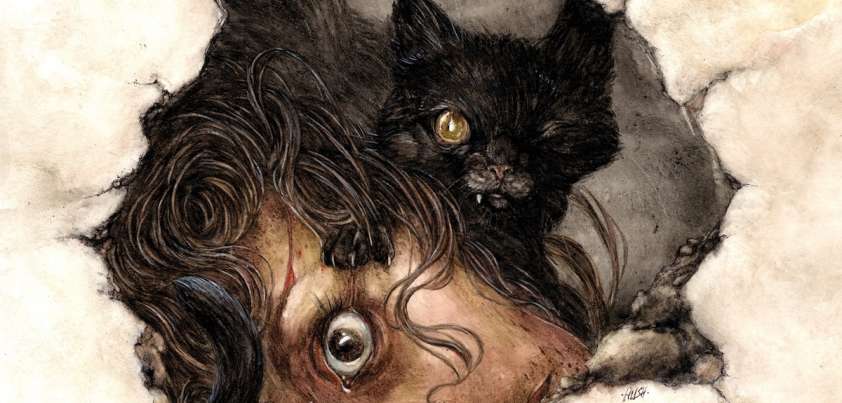 The Stephen Kings of the writing world tend to use external, often supernatural forces as their instruments of terror. With Edgar Allan Poe, the horror generally develops from the tortured mind of man. The protagonist here has lost his mind to alcoholism. Like many alcoholics, he becomes violent when in a drunken state. This is initially directed towards family pets. Extreme cruelty to animals can indicate psychopathic tendencies, and this proves true later in the story when he shows no remorse for any of his actions, including the murder of his wife. Themes: alcoholism, mental illness, brutality, death. More…
The Stephen Kings of the writing world tend to use external, often supernatural forces as their instruments of terror. With Edgar Allan Poe, the horror generally develops from the tortured mind of man. The protagonist here has lost his mind to alcoholism. Like many alcoholics, he becomes violent when in a drunken state. This is initially directed towards family pets. Extreme cruelty to animals can indicate psychopathic tendencies, and this proves true later in the story when he shows no remorse for any of his actions, including the murder of his wife. Themes: alcoholism, mental illness, brutality, death. More…
An Unsound Sleep
 This story by Nhat Tien is set during the Vietnamese Buddhist Crisis of 1963. An old man’s contented existence is shattered when his only daughter is involved in, and subsequently jailed for, anti-government activities. Rather than focus on the violence of the revolt and ensuing CIA backed coup, the story contrasts the idealistic expectations of the daughter and her revolutionary boyfriend with what comes after. When released from prison the couple find that, although Buddhists have gained religious freedom, little else has changed. Themes include family, poverty, freedom, idealism, sacrifice, futility, alcohol abuse. More…
This story by Nhat Tien is set during the Vietnamese Buddhist Crisis of 1963. An old man’s contented existence is shattered when his only daughter is involved in, and subsequently jailed for, anti-government activities. Rather than focus on the violence of the revolt and ensuing CIA backed coup, the story contrasts the idealistic expectations of the daughter and her revolutionary boyfriend with what comes after. When released from prison the couple find that, although Buddhists have gained religious freedom, little else has changed. Themes include family, poverty, freedom, idealism, sacrifice, futility, alcohol abuse. More…
War
 If you are looking for an action-packed war story, this is not for you. Set in Italy during World War One, this story by Luigi Pirandello is a dialogue-packed discussion among the parents of men who are going or have gone off to war about its impact on their lives. The central themes are patriotism, duty, fear, sacrifice and grief. The climax comes when a man who claimed to be above grief because his son died honorably for his country breaks into tears when forced to confront the fact that the boy really is dead and gone forever. More…
If you are looking for an action-packed war story, this is not for you. Set in Italy during World War One, this story by Luigi Pirandello is a dialogue-packed discussion among the parents of men who are going or have gone off to war about its impact on their lives. The central themes are patriotism, duty, fear, sacrifice and grief. The climax comes when a man who claimed to be above grief because his son died honorably for his country breaks into tears when forced to confront the fact that the boy really is dead and gone forever. More…
The Yellow Wallpaper
 This partly autobiographical story by Charlotte Gilman describes the experiences of a creative, imaginative woman suffering from post-natal depression. She follows the then (1890s) generally accepted medical advice to spend her time “resting” in semi-isolation. Gilman skillfully uses the setting to turn an otherwise clinical account of a mental breakdown into a chilling psychological horror story. Although living in a colonial mansion amid idyllic countryside, the poor woman spends most of her time in a prison-like room with creepy wallpaper. Major themes include the fallibility of doctors and our reluctance to question them, mental illness, freedom and self-expression, and gender roles in society. More…
This partly autobiographical story by Charlotte Gilman describes the experiences of a creative, imaginative woman suffering from post-natal depression. She follows the then (1890s) generally accepted medical advice to spend her time “resting” in semi-isolation. Gilman skillfully uses the setting to turn an otherwise clinical account of a mental breakdown into a chilling psychological horror story. Although living in a colonial mansion amid idyllic countryside, the poor woman spends most of her time in a prison-like room with creepy wallpaper. Major themes include the fallibility of doctors and our reluctance to question them, mental illness, freedom and self-expression, and gender roles in society. More…
Jealous Husband Returns in Form of Parrot
 The major messages of this playful story by Robert Olen Butler are the importance of communication in a relationship, and that jealousy can develop into a dangerous obsession. A jealous husband who did not articulate his love or concerns enough is resurrected as a parrot and purchased as a pet by his recently widowed wife. When taken “home” in a cage, he finds she is enjoying her newfound freedom with a string of other partners. Ironically, now realizes how much he loves her, but doesn’t have the vocabulary to tell her. Themes include love, communication, infidelity, jealousy, obsession. More…
The major messages of this playful story by Robert Olen Butler are the importance of communication in a relationship, and that jealousy can develop into a dangerous obsession. A jealous husband who did not articulate his love or concerns enough is resurrected as a parrot and purchased as a pet by his recently widowed wife. When taken “home” in a cage, he finds she is enjoying her newfound freedom with a string of other partners. Ironically, now realizes how much he loves her, but doesn’t have the vocabulary to tell her. Themes include love, communication, infidelity, jealousy, obsession. More…
Landscape with Flatiron
 This story from Haruki Murakami paints a bleak picture of the troubled lives of a young woman (Junko) and the middle-aged artist (Miyake) who befriends her. The pair bond over bonfires Miyake constructs on a beach. Both appear to be trying to escape unstated traumas from their past, and could possibly be suffering from PTSD. Their lives are contrasted with that of Junko’s boyfriend, a carefree surfer and musician. Set a month after the devastating 1995 Kobe earthquake, major themes include the meaning and uncertainty of life and, of course, death. Other themes are artistic inspiration, family, emptiness and suicide. More…
This story from Haruki Murakami paints a bleak picture of the troubled lives of a young woman (Junko) and the middle-aged artist (Miyake) who befriends her. The pair bond over bonfires Miyake constructs on a beach. Both appear to be trying to escape unstated traumas from their past, and could possibly be suffering from PTSD. Their lives are contrasted with that of Junko’s boyfriend, a carefree surfer and musician. Set a month after the devastating 1995 Kobe earthquake, major themes include the meaning and uncertainty of life and, of course, death. Other themes are artistic inspiration, family, emptiness and suicide. More…
The Last Rung on the Ladder
 This heart-wrenching story by Stephen King explores a common feature of modern life: the way many families drift apart as younger members leave home. As children, the protagonist and his younger sister shared a life-threatening adventure involving a broken ladder. The girl’s comment afterwards: I knew you must have been doing something to fix it. You’re my big brother. I knew you’d take care of me. Later in life, he is too busy climbing a different ladder to be there when needed. Themes include faith, family drift, loss of innocence, isolation, despair, guilt. More…
This heart-wrenching story by Stephen King explores a common feature of modern life: the way many families drift apart as younger members leave home. As children, the protagonist and his younger sister shared a life-threatening adventure involving a broken ladder. The girl’s comment afterwards: I knew you must have been doing something to fix it. You’re my big brother. I knew you’d take care of me. Later in life, he is too busy climbing a different ladder to be there when needed. Themes include faith, family drift, loss of innocence, isolation, despair, guilt. More…
Haircut
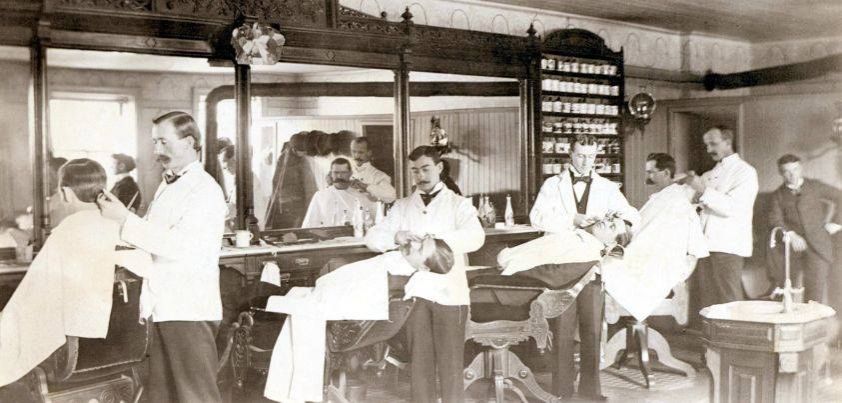 This story by Ring Lardner shows how satire can be used to raise awareness of problems in society. A small-town barber talks to a visitor about local life. The barber seems to think the town is a good place to live. However, the stories he tells suggest otherwise… especially if you are a woman or impaired in some way. Most of the barber’s stories are about a dead customer who he says had a kind heart but just liked to have fun with people. We hope you can see that the customer was not kind at all! More…
This story by Ring Lardner shows how satire can be used to raise awareness of problems in society. A small-town barber talks to a visitor about local life. The barber seems to think the town is a good place to live. However, the stories he tells suggest otherwise… especially if you are a woman or impaired in some way. Most of the barber’s stories are about a dead customer who he says had a kind heart but just liked to have fun with people. We hope you can see that the customer was not kind at all! More…
The Erlking
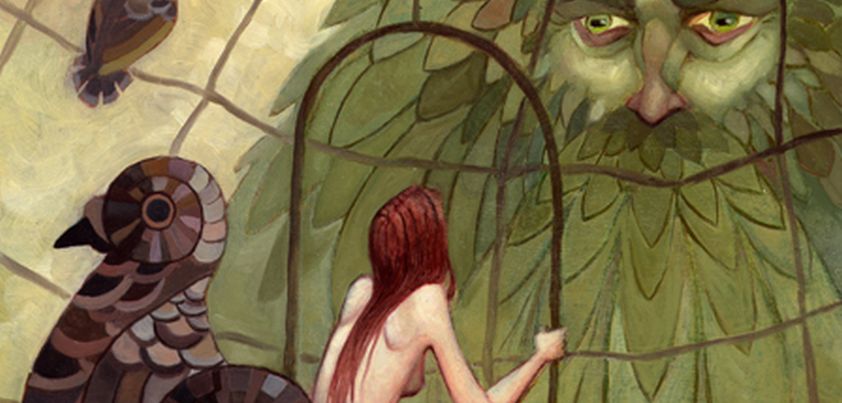 This “fairy-tale” by Angela Carter is derived from a European myth. A magical being living in harmony with nature seduces young women traveling through his forest domain. The women are powerless to resist. When he tires of one, he transforms her into a bird, cages her, and adds the cage to a collection of similar cages adorning the walls of his house. The protagonist, sensing her fate, decides that the only way to free herself and his “bird” collection is to do away with him. Themes include connectedness to nature, the supernatural, power and objectification, sexuality, entrapment, liberation. More…
This “fairy-tale” by Angela Carter is derived from a European myth. A magical being living in harmony with nature seduces young women traveling through his forest domain. The women are powerless to resist. When he tires of one, he transforms her into a bird, cages her, and adds the cage to a collection of similar cages adorning the walls of his house. The protagonist, sensing her fate, decides that the only way to free herself and his “bird” collection is to do away with him. Themes include connectedness to nature, the supernatural, power and objectification, sexuality, entrapment, liberation. More…
Silent Snow, Secret Snow
 Conrad Aiken’s Silent Snow, Secret Snow is a psychological horror fantasy. It begins with a twelve-year-old boy (Paul) imagining overnight snowfalls. This leads to a growing fascination with snow, the thought of which provides relief from the mundane routine of his daily life, the ugliness of the world around him, parent-child conflicts, and awakening sexuality. As the imagined snowfalls increase, Paul begins to lose touch with reality. In the disturbing climax, his boy’s “snow voices” come alive and he completely withdraws into himself as they tell him a story. Major themes: mental illness, concealment, detachment and alienation. More…
Conrad Aiken’s Silent Snow, Secret Snow is a psychological horror fantasy. It begins with a twelve-year-old boy (Paul) imagining overnight snowfalls. This leads to a growing fascination with snow, the thought of which provides relief from the mundane routine of his daily life, the ugliness of the world around him, parent-child conflicts, and awakening sexuality. As the imagined snowfalls increase, Paul begins to lose touch with reality. In the disturbing climax, his boy’s “snow voices” come alive and he completely withdraws into himself as they tell him a story. Major themes: mental illness, concealment, detachment and alienation. More…
The Magic Barrel
 In this humorous story from Bernard Malamud a rabbinical student, a matchmaker, and an errant young woman with “desperately innocent” eyes are all potential winners. The story is as much about the young, introverted rabbi-to-be’s spiritual emptiness as it is his desire to find a wife. His first meeting with a potential match reveals an embarrassing truth: he can’t explain the reason for his calling. He feels a need to re-invent himself, and finds a path to possible redemption in the photograph of a woman whose face carries an “impression of evil”. Themes: tradition, materialism, loneliness, identity, religion, love, redemption. More…
In this humorous story from Bernard Malamud a rabbinical student, a matchmaker, and an errant young woman with “desperately innocent” eyes are all potential winners. The story is as much about the young, introverted rabbi-to-be’s spiritual emptiness as it is his desire to find a wife. His first meeting with a potential match reveals an embarrassing truth: he can’t explain the reason for his calling. He feels a need to re-invent himself, and finds a path to possible redemption in the photograph of a woman whose face carries an “impression of evil”. Themes: tradition, materialism, loneliness, identity, religion, love, redemption. More…
Araby
 It is tempting to think the central theme of this story by James Joyce is an adolescent boy’s infatuation with a friend’s older sister. However, the title gives it away. The main theme, brought about by the boy’s wish to impress the girl, is his obsession with visiting the Grand Oriental Fete (Araby). The story helps us vicariously re-live our own Arabies. Whether it be a relationship, work opportunity or important event, we all have experiences where something much looked forward to greatly disappoints. We know how the boy feels! We know how the boy feels! Other themes: alienation, loneliness, religion, vanity, disillusionment. More…
It is tempting to think the central theme of this story by James Joyce is an adolescent boy’s infatuation with a friend’s older sister. However, the title gives it away. The main theme, brought about by the boy’s wish to impress the girl, is his obsession with visiting the Grand Oriental Fete (Araby). The story helps us vicariously re-live our own Arabies. Whether it be a relationship, work opportunity or important event, we all have experiences where something much looked forward to greatly disappoints. We know how the boy feels! We know how the boy feels! Other themes: alienation, loneliness, religion, vanity, disillusionment. More…
A Night in the Life of the Mayor
 This humorous story by Manoj Das takes a satirical swipe at the abuse of power and narcissism of Indian officials. A mayor belittles his old professor for complaining about a stray cow that chewed up his granddaughter’s psychology notebooks. Karma strikes when that same cow runs off with the mayor’s half-eaten clothes and car keys as he is taking a dip in a secluded part of a river. He experiences an epiphany as he floats down the river, lying naked in a boat, after people arrive and start searching for him. Themes include ambition, power, pride, narcissism, self-discovery, redemption, regret. More…
This humorous story by Manoj Das takes a satirical swipe at the abuse of power and narcissism of Indian officials. A mayor belittles his old professor for complaining about a stray cow that chewed up his granddaughter’s psychology notebooks. Karma strikes when that same cow runs off with the mayor’s half-eaten clothes and car keys as he is taking a dip in a secluded part of a river. He experiences an epiphany as he floats down the river, lying naked in a boat, after people arrive and start searching for him. Themes include ambition, power, pride, narcissism, self-discovery, redemption, regret. More…
The Artist / Painter
 With over 100 to choose from, it was hard to decide where to start with the short stories of Bengali writer Rabindranath Tagore. In recognition of his mastery of so many fields, we have chosen this lesser-known story written in 1929. This was a year after Tagore took up painting (at age sixty-seven!) and went on to re-shape the Indian art world. The themes of the story reflect Tagore’s life: embrace your passions, and don’t let the criticism of others (such as the ‘connoisseurs’ who laughed at Rangalal) or worship of money (as demonstrated by Govinda) stand in your way. More…
With over 100 to choose from, it was hard to decide where to start with the short stories of Bengali writer Rabindranath Tagore. In recognition of his mastery of so many fields, we have chosen this lesser-known story written in 1929. This was a year after Tagore took up painting (at age sixty-seven!) and went on to re-shape the Indian art world. The themes of the story reflect Tagore’s life: embrace your passions, and don’t let the criticism of others (such as the ‘connoisseurs’ who laughed at Rangalal) or worship of money (as demonstrated by Govinda) stand in your way. More…
How My Brother Leon Brought Home a Wife
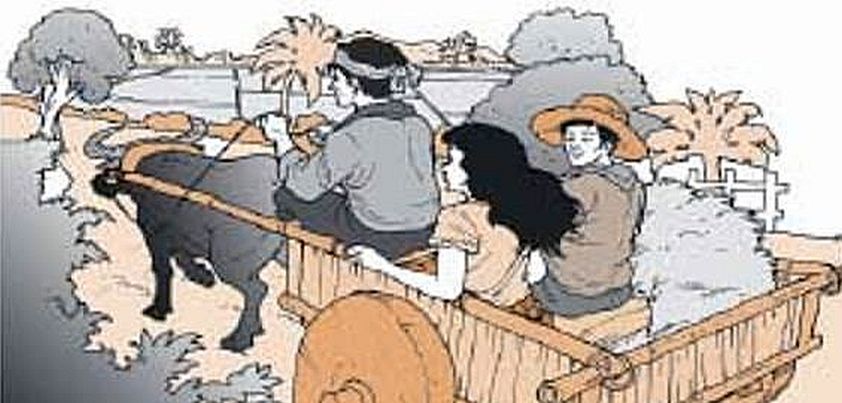 In this popular Filipino story from Manuel E. Arguilla, a son brings his city-based bride home to the countryside to “meet the family”, only to have the poor woman tested by his father before she even arrives. The father has his younger son meet them with a bullock cart rather than horse and carriage, and bring them home via a stony “short-cut” along a dry creek bed rather than the smoother main road. The apprehensive but charming girl (in high heels no less!) passes the tests with flying colors. Themes: love, fear, perseverance, patriarchy, reputation. More…
In this popular Filipino story from Manuel E. Arguilla, a son brings his city-based bride home to the countryside to “meet the family”, only to have the poor woman tested by his father before she even arrives. The father has his younger son meet them with a bullock cart rather than horse and carriage, and bring them home via a stony “short-cut” along a dry creek bed rather than the smoother main road. The apprehensive but charming girl (in high heels no less!) passes the tests with flying colors. Themes: love, fear, perseverance, patriarchy, reputation. More…
The Balloon
 A huge balloon appears unexpectedly one night, covering 20 city blocks of central Manhattan. Nobody knows why it is there, triggering varying initial responses. After a short time, people begin to accept the balloon simply because it exists. They no longer need to know why. Like the balloon, this story by Donald Barthelme may appear confusing at first because it appears to have no message or theme. Barthelme is satirizing our need to know “why” (find a purpose or meaning) before we can appreciate a creative expression… whether it be a balloon, a work of art, or a story. More…
A huge balloon appears unexpectedly one night, covering 20 city blocks of central Manhattan. Nobody knows why it is there, triggering varying initial responses. After a short time, people begin to accept the balloon simply because it exists. They no longer need to know why. Like the balloon, this story by Donald Barthelme may appear confusing at first because it appears to have no message or theme. Barthelme is satirizing our need to know “why” (find a purpose or meaning) before we can appreciate a creative expression… whether it be a balloon, a work of art, or a story. More…
Arabesque: The Mouse
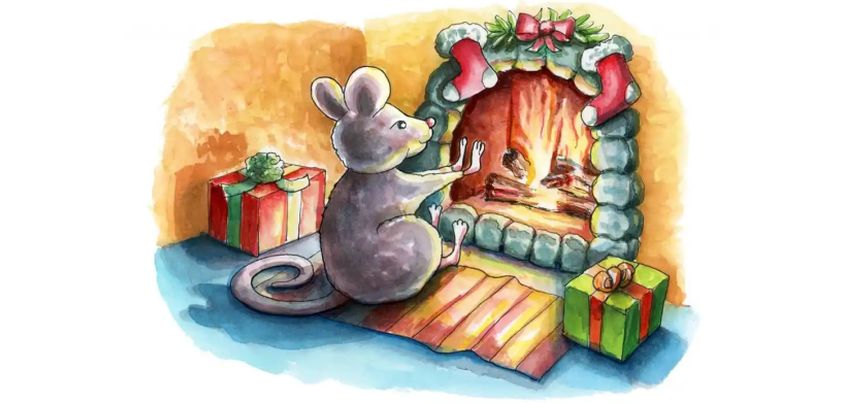 In this psychological horror story by A. E. Coppard, an idealistic man who has withdrawn from society due to constant rebuff sits alone in a mouse-infested garret. As he watches the antics of a mouse in front of his fireplace, his mind wanders to the death of his mother and loss of the only woman he ever loved. When he comes back to reality, the mouse is sitting before a trap with its forepaws torn off. Association of this with his mother’s grisly death sends him to the brink of madness. Themes include mother-child relationships, loss, depression, despair, shame, insanity. More…
In this psychological horror story by A. E. Coppard, an idealistic man who has withdrawn from society due to constant rebuff sits alone in a mouse-infested garret. As he watches the antics of a mouse in front of his fireplace, his mind wanders to the death of his mother and loss of the only woman he ever loved. When he comes back to reality, the mouse is sitting before a trap with its forepaws torn off. Association of this with his mother’s grisly death sends him to the brink of madness. Themes include mother-child relationships, loss, depression, despair, shame, insanity. More…
The Door in the Wall
 The major theme of this psychological fantasy by H. G. Wells is the conflict between reality (logic) and imagination. A precocious five-year old from a loveless household is permitted to walk the streets of London alone. One day he is drawn to a door that opens to an enchanted garden where he is greeted by tame animals and a beautiful, loving woman and plays with friendly children. Despite achieving great success in life, he becomes obsessed with re-visiting the garden. Other themes: childhood neglect, alienation and loneliness, escape, regret, obsession, success vs. happiness. More…
The major theme of this psychological fantasy by H. G. Wells is the conflict between reality (logic) and imagination. A precocious five-year old from a loveless household is permitted to walk the streets of London alone. One day he is drawn to a door that opens to an enchanted garden where he is greeted by tame animals and a beautiful, loving woman and plays with friendly children. Despite achieving great success in life, he becomes obsessed with re-visiting the garden. Other themes: childhood neglect, alienation and loneliness, escape, regret, obsession, success vs. happiness. More…
The Signal-man
 Many Charles Dickens stories feature ghosts. Part of the attraction of The Signal-man is that, although generally considered one of these, there is no hard evidence of a ghost. Dickens masterfully uses setting to create a forbidding, unearthly atmosphere, and then leaves the question of the ghost to the reader. Like all first-person stories, the narrator’s version is open to misinterpretation and bias. The only evidence of the supernatural are the ghostly sightings described by the (now dead) signal-man, and some (potentially coincidental) shared expressions and gestures. Themes: duty & responsibility, fate, isolation, guilt, sanity, the supernatural. More…
Many Charles Dickens stories feature ghosts. Part of the attraction of The Signal-man is that, although generally considered one of these, there is no hard evidence of a ghost. Dickens masterfully uses setting to create a forbidding, unearthly atmosphere, and then leaves the question of the ghost to the reader. Like all first-person stories, the narrator’s version is open to misinterpretation and bias. The only evidence of the supernatural are the ghostly sightings described by the (now dead) signal-man, and some (potentially coincidental) shared expressions and gestures. Themes: duty & responsibility, fate, isolation, guilt, sanity, the supernatural. More…
Once Upon a Time
 Although Nadine Gordimer’s Once Upon a Time follows a fairy-tale pattern (there is even a wise old witch!), the storyline doesn’t have a fairy-tale ending. On a superficial level, it could be regarded as a parody of The Three Little Pigs: a family builds a stronger and stronger house to keep out the big bad wolf, only for the extra security to ruin their lives. On a more serious note, the story has several important themes: Racism, Apartheid and Inequality (which lead to Social Decay) and the consequences of being ruled by Fear (Anxiety, Overreaction, and in this case Self-Destruction). More…
Although Nadine Gordimer’s Once Upon a Time follows a fairy-tale pattern (there is even a wise old witch!), the storyline doesn’t have a fairy-tale ending. On a superficial level, it could be regarded as a parody of The Three Little Pigs: a family builds a stronger and stronger house to keep out the big bad wolf, only for the extra security to ruin their lives. On a more serious note, the story has several important themes: Racism, Apartheid and Inequality (which lead to Social Decay) and the consequences of being ruled by Fear (Anxiety, Overreaction, and in this case Self-Destruction). More…
The English Pupil
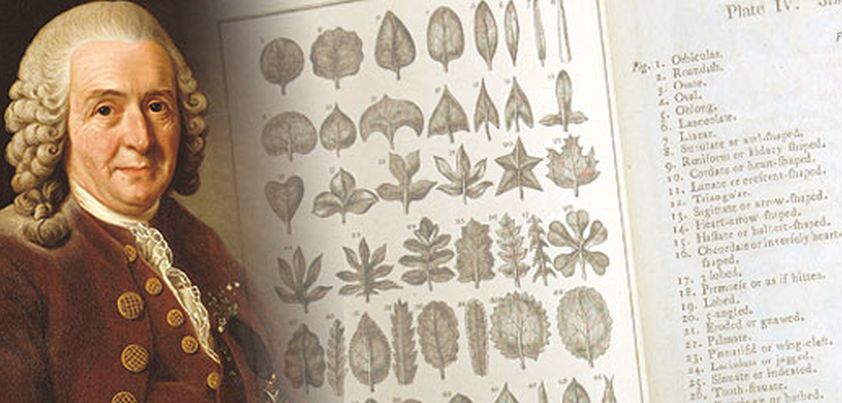 In addition to being a celebration of the life and work of renowned biologist Carl Linnaeus, major themes of this touching story by Andrea Barrett are aging, memory and approaching death. The dying scientist has his coachman take him to his empty country estate where, amid a fog of fading memories, he reminisces about his life and the fate of some of the “apostles” he sent around the world to collect biological specimens. Later, he is joined by a concerned daughter and an unknown man he imagines to be his only surviving pupil. Other themes include family, pride and regret. More…
In addition to being a celebration of the life and work of renowned biologist Carl Linnaeus, major themes of this touching story by Andrea Barrett are aging, memory and approaching death. The dying scientist has his coachman take him to his empty country estate where, amid a fog of fading memories, he reminisces about his life and the fate of some of the “apostles” he sent around the world to collect biological specimens. Later, he is joined by a concerned daughter and an unknown man he imagines to be his only surviving pupil. Other themes include family, pride and regret. More…
The Shroud / Kafan
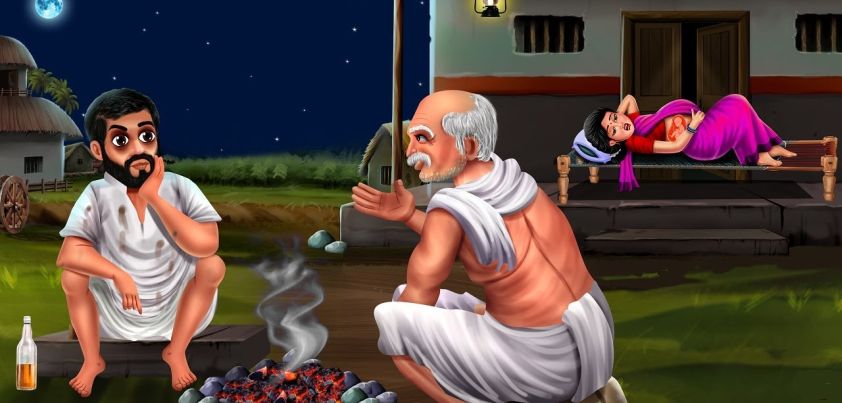 This dark comedy by Premchand follows father and son Chamars (one of the Dalit or “untouchable” sub-castes) as they go to buy a funeral shroud for the son’s deceased wife. The lazy but likeable pair, who will do anything to shirk work, end up spending donated shroud money on a boozy night in town. The story satirizes the caste system by pointing out that those who can never rise above their low birth position have little incentive to do more than ensure their survival. Themes include social class, callousness, indolence, tradition, selfishness, exploitation (of the generosity of others). More…
This dark comedy by Premchand follows father and son Chamars (one of the Dalit or “untouchable” sub-castes) as they go to buy a funeral shroud for the son’s deceased wife. The lazy but likeable pair, who will do anything to shirk work, end up spending donated shroud money on a boozy night in town. The story satirizes the caste system by pointing out that those who can never rise above their low birth position have little incentive to do more than ensure their survival. Themes include social class, callousness, indolence, tradition, selfishness, exploitation (of the generosity of others). More…
The Guest
 In this story by Albert Camus, a policeman orders Daru, a teacher from a remote Algerian school, to escort an alleged murderer to the nearest city. Camus was an early philosopher in the field of Existentialism. The story features several existential themes: the absurd (The situation Daru finds himself in.); the need to choose (Daru can follow the policeman’s order or set the man free; the man can go South to freedom or East to captivity.); and angst (Daru was in a “no win” situation. Whatever decision he makes will have unpleasant, and possibly deadly, consequences.) Other themes: honor, hospitality. More…
In this story by Albert Camus, a policeman orders Daru, a teacher from a remote Algerian school, to escort an alleged murderer to the nearest city. Camus was an early philosopher in the field of Existentialism. The story features several existential themes: the absurd (The situation Daru finds himself in.); the need to choose (Daru can follow the policeman’s order or set the man free; the man can go South to freedom or East to captivity.); and angst (Daru was in a “no win” situation. Whatever decision he makes will have unpleasant, and possibly deadly, consequences.) Other themes: honor, hospitality. More…
A Home near the Sea
 In this story by Kamala Das, an Indian woman angrily scolds her husband, a lazy drunkard, as she tells a fellow beggar how a year earlier he lost a secure job and caused them to be evicted from their hut. As the aging woman complains about her lot, the listener brings her to tears. He poetically extols the benefits of living in the open beside the sea, provides encouragement that things will improve, speaks to her of music and artistry, and likens her to the Hindu goddess Lakshmi. Themes include marriage (loyalty, jealousy, control and complacency), poverty, negativity, dreams, generosity. More…
In this story by Kamala Das, an Indian woman angrily scolds her husband, a lazy drunkard, as she tells a fellow beggar how a year earlier he lost a secure job and caused them to be evicted from their hut. As the aging woman complains about her lot, the listener brings her to tears. He poetically extols the benefits of living in the open beside the sea, provides encouragement that things will improve, speaks to her of music and artistry, and likens her to the Hindu goddess Lakshmi. Themes include marriage (loyalty, jealousy, control and complacency), poverty, negativity, dreams, generosity. More…
Tobermory
 This story is from H.H. Munro (aka Saki)’s Chronicles of Clovis, which follows the exploits of a spoiled, upper-class young man as he causes mischief among Edwardian high society. Clovis attends a weekend house-party. Among the other guests is a visiting scientist who was invited in the hope that his cleverness would contribute to the general entertainment. All are amazed when the scientist teaches Tobermory, the family house-cat, to speak perfect English. However, their wonder soon turns to anger at some of the things Tobermory has to say. This seals Tobermory’s fate. He knows too much and must be silenced! More…
This story is from H.H. Munro (aka Saki)’s Chronicles of Clovis, which follows the exploits of a spoiled, upper-class young man as he causes mischief among Edwardian high society. Clovis attends a weekend house-party. Among the other guests is a visiting scientist who was invited in the hope that his cleverness would contribute to the general entertainment. All are amazed when the scientist teaches Tobermory, the family house-cat, to speak perfect English. However, their wonder soon turns to anger at some of the things Tobermory has to say. This seals Tobermory’s fate. He knows too much and must be silenced! More…
Thus Were Their Faces
 In this surreal, rather abstract story by Silvina Ocampo, a seemingly confused (or perhaps mentally disturbed) narrator describes the bizarre behavior of children at a boarding school. The students begin to act as if they want to become equal, and increasingly lose their individuality. Seemingly directed by a collective consciousness, they strive to look and act the same and develop a strange fascination with wings. In the “miraculous” climax, we learn that all children attending the school share a common characteristic: it is a school for the deaf! Themes include identity, equality, freedom, the supernatural. More…
In this surreal, rather abstract story by Silvina Ocampo, a seemingly confused (or perhaps mentally disturbed) narrator describes the bizarre behavior of children at a boarding school. The students begin to act as if they want to become equal, and increasingly lose their individuality. Seemingly directed by a collective consciousness, they strive to look and act the same and develop a strange fascination with wings. In the “miraculous” climax, we learn that all children attending the school share a common characteristic: it is a school for the deaf! Themes include identity, equality, freedom, the supernatural. More…
With All Flags Flying
 An unusual aspect of this Anne Tyler story about an eighty-two-year-old man going into an “old folks’ home” is that he is doing it out of choice and on his own terms. The old man has renounced the material world. For him, the most important possessions in life are his independence and dignity. Although he has a loving family who would gladly house and care for him, he is ashamed of his growing weakness and steadfastly (and somewhat selfishly) refuses to be loved at any cost. Themes: aging, independence, frugality/minimalism, family, pride, stubbornness.
An unusual aspect of this Anne Tyler story about an eighty-two-year-old man going into an “old folks’ home” is that he is doing it out of choice and on his own terms. The old man has renounced the material world. For him, the most important possessions in life are his independence and dignity. Although he has a loving family who would gladly house and care for him, he is ashamed of his growing weakness and steadfastly (and somewhat selfishly) refuses to be loved at any cost. Themes: aging, independence, frugality/minimalism, family, pride, stubbornness.
More…
Dominoes
 Jack Agüeros cleverly uses a game of dominoes to illustrate two common themes affecting Puerto Rican immigrants living in the United States: fate vs. free will, and the Latin American concept of machismo. Fate is mirrored by the game and its outcome. Is it over as soon as you get your hand, as Tito says, or a game of skill where you can influence the result? Machismo (being seen as a man among men) introduces several sub-themes: pride, patronization of women, competitiveness, protection of honor, success with women, insecurity, and the ever-present prospect of violence. More…
Jack Agüeros cleverly uses a game of dominoes to illustrate two common themes affecting Puerto Rican immigrants living in the United States: fate vs. free will, and the Latin American concept of machismo. Fate is mirrored by the game and its outcome. Is it over as soon as you get your hand, as Tito says, or a game of skill where you can influence the result? Machismo (being seen as a man among men) introduces several sub-themes: pride, patronization of women, competitiveness, protection of honor, success with women, insecurity, and the ever-present prospect of violence. More…
A Municipal Report
 O. Henry wrote over 600 short stories, of which some critics consider this to be one of the best. The plot involves what happens between the unnamed narrator, three main characters, and a torn dollar bill that keeps coming back to its original owner. The characters: Azalea Adair, a self-educated, gentle lady of the old South; Major Caswell, a cruel husband who treats her badly; and Uncle Caesar, a kind African-American man with a royal bearing who tries to help Azalea. Themes include: pretense, pride, change, domestic violence, loyalty, self-learning and the power of imagination. More…
O. Henry wrote over 600 short stories, of which some critics consider this to be one of the best. The plot involves what happens between the unnamed narrator, three main characters, and a torn dollar bill that keeps coming back to its original owner. The characters: Azalea Adair, a self-educated, gentle lady of the old South; Major Caswell, a cruel husband who treats her badly; and Uncle Caesar, a kind African-American man with a royal bearing who tries to help Azalea. Themes include: pretense, pride, change, domestic violence, loyalty, self-learning and the power of imagination. More…
The Jilting of Granny Weatherall
 This story from Katherine Porter describes the disoriented thoughts and recollections of a feisty eighty-year-old (Granny Weatherall) as she lies dying in the house of one of her daughters. Satisfied with her life, she awaits a sign from God to say that her time has come. In her last moments, she likens the absence of such a sign to being left standing at the altar sixty earlier. Major themes are perseverance, motherhood and faith. Other themes: aging and death, loss (over the death of husband John and daughter Hapsy), betrayal and repressed anger (over being jilted by George). More…
This story from Katherine Porter describes the disoriented thoughts and recollections of a feisty eighty-year-old (Granny Weatherall) as she lies dying in the house of one of her daughters. Satisfied with her life, she awaits a sign from God to say that her time has come. In her last moments, she likens the absence of such a sign to being left standing at the altar sixty earlier. Major themes are perseverance, motherhood and faith. Other themes: aging and death, loss (over the death of husband John and daughter Hapsy), betrayal and repressed anger (over being jilted by George). More…
Where Is Here?
 One of the beauties of this unsettling story by Joyce Carol Oates is that it is open to many interpretations depending on how much one reads into the visitor’s identity and purpose. At its simplest, the story involves a man behaving strangely as he confronts pleasant and unpleasant memories during a visit to his childhood home. More imaginative interpretations include revisiting a scene of child abuse and/or patricide, and a ghostly warning from the past or future about looming danger or a cursed house. Themes: (general) nostalgia, connection, domestic violence; (through the riddles) mortality, time, infinity. More…
One of the beauties of this unsettling story by Joyce Carol Oates is that it is open to many interpretations depending on how much one reads into the visitor’s identity and purpose. At its simplest, the story involves a man behaving strangely as he confronts pleasant and unpleasant memories during a visit to his childhood home. More imaginative interpretations include revisiting a scene of child abuse and/or patricide, and a ghostly warning from the past or future about looming danger or a cursed house. Themes: (general) nostalgia, connection, domestic violence; (through the riddles) mortality, time, infinity. More…
The Return
 Roberto Bolaño’s The Return is not your usual Gothic ghost story. The mood (though not the storyline) is more like the Patrick Swayze movie Ghost, which is referred to in the story. When a man’s ghost finds that it can communicate with a famous French fashion designer, it decides to spend its time on earth with him. The two hadn’t known each other in real life, and only met because the fashion designer had paid to have sex with the man’s corpse! Themes: death, the afterlife, necrophilia, disillusionment, insecurity, isolation, empathy. More…
Roberto Bolaño’s The Return is not your usual Gothic ghost story. The mood (though not the storyline) is more like the Patrick Swayze movie Ghost, which is referred to in the story. When a man’s ghost finds that it can communicate with a famous French fashion designer, it decides to spend its time on earth with him. The two hadn’t known each other in real life, and only met because the fashion designer had paid to have sex with the man’s corpse! Themes: death, the afterlife, necrophilia, disillusionment, insecurity, isolation, empathy. More…